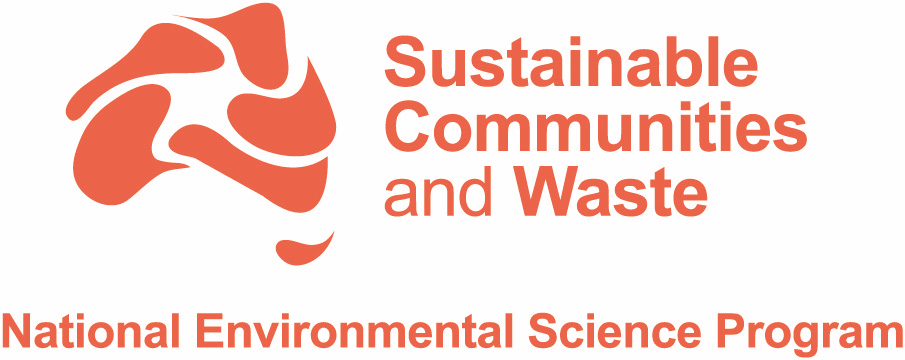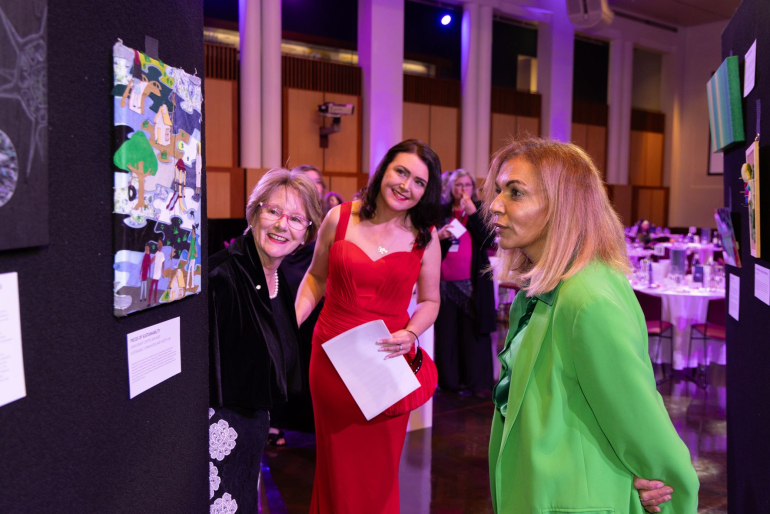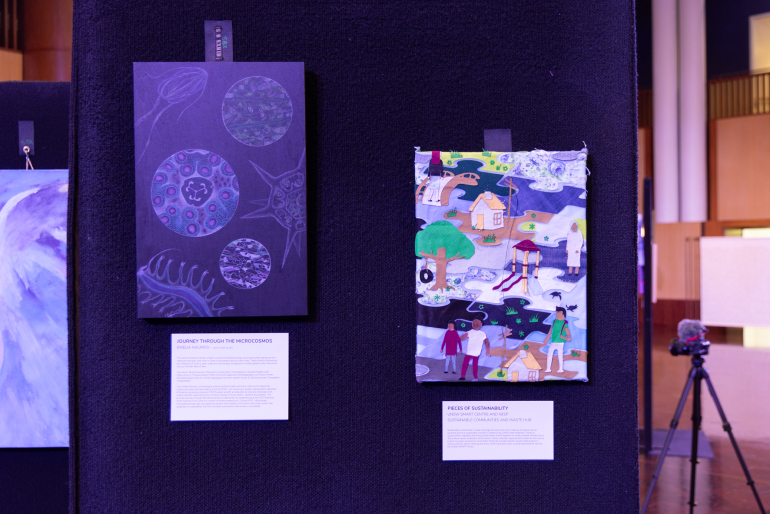The Sustainable Communities and Waste Hub has contributed an artwork made from waste materials to an auction raising funds for the National Youth Science Forum (NYSF), a not-for-profit charity connecting young Australians with science and technology.
Hon Dr Anne Aly MP attended the NYSF Silent Auction (pictured above), which was made up of original art created and donated by the science and technology sector and the NYSF community.
The Hub was invited to contribute a piece of art for the organisation’s 40th anniversary charity auction guided by the following theme:
“The difference between science and the arts is not that they are different sides of the same coin even, or even different parts of the same continuum, but rather, they are manifestations of the same thing. The arts and sciences are avatars of human creativity.”
In total, the event raised over $8,800 on the night to support the NYSF Access and Equity Scholarship Fund which assists young people from disadvantaged communities to attend NYSF programs.
The artwork blurb reads:
"'Pieces of Sustainability' by SMaRT@UNSW and NESP Sustainable Communities and Waste Hub
Sustainable communities in urban and regional areas who view waste as a resource are an essential part of a sustainable Australia. Created using 100% waste materials, ‘Pieces of Sustainability’ highlights the many puzzle pieces that fit together to create a planet-friendly future. The artwork raises awareness of the value in these materials, requiring both creativity and science to find innovative solutions to reuse them. Materials include expired, unused medical gowns, school uniforms, denim clothing and more, which have been laser cut and assembled by hand at the UNSW SMaRT Centre."
NYSF’s Sarah Crowe helped organise the event and says the funds raised will help to make science more accessible.
“For 40 years, the National Youth Science Forum has been committed to making STEM accessible to all young Australians. NYSF Access and Equity Scholarships provide invaluable opportunities for students from disadvantaged backgrounds—whether they’re from remote and regional areas, Aboriginal and Torres Strait Islander communities, low socioeconomic families, minority groups, or those living with disabilities or as carers,” said Ms Crowe.


